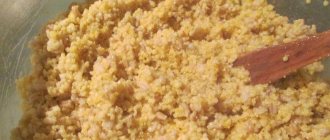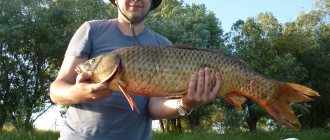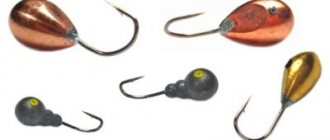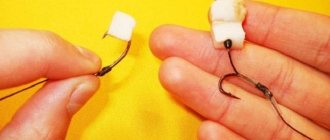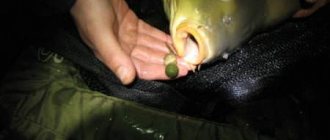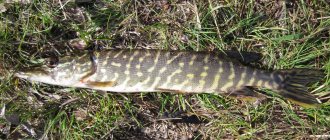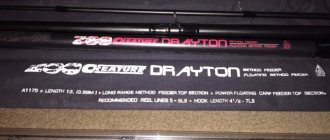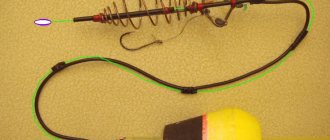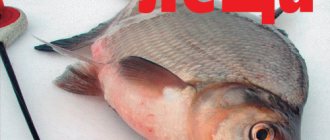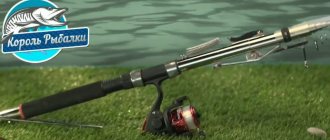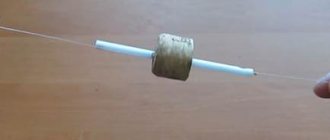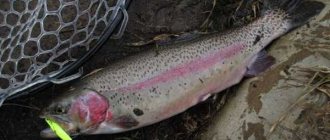Carp is a fish common in the waters of southern Russia and very popular among fishermen. Unusually prolific. To catch it, feeder, float, and bottom gear are used. Experienced fishermen often use a long-standing and proven method of catching carp - using a spring.
The method is economical and easy to learn. Its main advantage is that the spring is an excellent camouflage of hooks, which a deceived fish can easily cling to.
When and where to catch carp on a spring
Hunting for carp will be successful if you take into account various factors - from the choice of season to the place of fishing. Carp can be caught almost any time, except winter. The fish is a herbivore, which is why it is more convenient to catch it in the spring, when there is little food in the water, and in the fall - at this time the fish replenishes its food reserves, anticipating frosts. In summer, many people try their luck, but a lot depends on the location. Due to the cold-blooded nature of the carp, it is better to go fishing on days of moderate weather. He is more active in the evening and morning.
Carp lives in quiet reservoirs, reed thickets, and in areas of flooded meadows and fields. To have a greater chance of catching it, you should study the characteristics of the chosen fishing spot - holes, depth differences, etc.
Types of attachments and baits
The result of carp fishing depends on the correct choice of bait.
It is very important to know the characteristic features of the fish, since in different seasons it prefers different bait:
- of animal origin is primarily more attractive in the spring, when the fish begin to eat during the winter period of hibernation and low activity. Carp also bite well on this bait during spawning. Baits of animal origin primarily include maggots, motels, worms and other grubs. A variety of fry are also very often used, especially if fishing is for larger individuals.
- Plant-based baits are not the least important part of the carp diet. A variety of porridges and mashes are used here. The most important thing is to cook them correctly. Such baits should not quickly become wet and dissolve in the water, as the fish will quickly lose interest in it. However, the bait cannot be one lump in the spring due to the fact that the fish simply cannot suck it in, and, accordingly, swallow the hook disguised here.
Tackle for carp fishing
The peculiarity of the gear for carp is that it is made taking into account the possibility of the carp spitting out the bait. This rig gives the fisherman extra time to set the hook. The spring is attached to the fishing line using a shock leader. It is much stronger than fishing line, and takes on all the load that occurs when casting a sinker and bringing fish ashore.
Also, unlike other types of gear (float, top, feeder), gear with a spring allows you to catch carp in places with weak currents.
When choosing gear for carp fishing, you should start, as expected, with the rod.
Select it depending on the size of the expected production. The main characteristics of the selection: stability and massiveness. You can take a bottom rod with a total length of 2-3.5 m, telescopic or plug-in type. The test must be at least 40 g. It doesn’t matter what its cost in the store is - calculate everything according to the volume of your wallet. Move the reel farther away from the rod so that in the event of a possible fight with the fish, the rod does not break.
Coil
Take a spinning one, with a volume of 3500 - 4000, with a rear friction brake. You can purchase a carp reel with a baitrunner. Carefully set up the reel so that during its use there is no line breakage or loss of all gear. The reel must hold at least 100m of fishing line.
fishing line
It is better to use monofilament strong fishing line with an average thickness of 0.3 mm. When fishing at a decent distance, take braids with a load of up to 5 kg.
Spring
Let's consider two types of springs: “donut” and “combine”. The donut spring is made of wire with a diameter of 2 mm.
The internal diameter of the finished spring reaches 20 mm. From three to six hooks are tied around the entire circumference. The spring is filled several times one by one. Due to the weight of the bait, the “donut” does not need additional weight to secure it firmly.
The “harvester” spring is easy to make and convenient to throw. Regular stainless steel is used and twisted into a cone shape. A cambric is put on top. With its help, the leashes are pulled out to the sides. The spring is attached to the cambric thanks to the central leash.
You can buy it in stores or make it yourself.
To begin, take stainless or copper wire with a diameter of 2 mm. Wind it around any pin, for example, a bolt with a diameter of up to 12 mm. You will get a tube approximately 7 cm long. Stretch it by 20 cm and twist it into a circle with a diameter of 2.2 cm. Secure the ends using a soldering iron.
Now we attach six leads to the spring. Take a thick thread or thin fishing line. Prepare a thread 15 cm long.
Having tied it to the spring, make sure that the distance from the spring to the intended hook is up to 6 cm. We tie hooks to each thread, preferably high-quality vanadium or hardened ones. Should be quite sharp. Also keep in mind that they must fit in the fish's mouth.
At the end, we attach the spring itself to the fishing line using a simple tie.
Composition of baits and baits
The following requirements apply to mixtures for filling the feeder: they must be thick and viscous so that when lowered into the water, the bait is not washed away by water and the hooks hidden in it are not exposed. Therefore, most often, various cereals, dough and cake are used for bait.
Many anglers do not like to use cake to fill the feeder because it is not sticky enough. Therefore, it can be difficult to push it into the feeder and disguise the hooks so that it does not fall apart during fishing. But still, you should not refuse the cake, as it has a strong smell that attracts fish. You can mix it with porridge or other viscous composition for complementary feeding.
The nozzle is selected depending on the composition of the bait. Experienced fishermen believe that corn, earthworms, maggots, peas, and bread are most suitable for this type of fishing. It is clear that these components must be components of the feed placed in the feeder.
Equipment for carp fishing with a spring
There are two types of correct equipment:
- Feeder (classic) . Line diameter 0.3 mm. For classic equipment, we take a length of about 1 m, with an end that ends in a loop. We attach a rubber stopper (or a bead) and a 5 cm PVC tube to it. After these manipulations, we attach the spring to the fishing line, the end of which should have a carabiner (if you have to change the equipment). The result is a rig 30-50 cm long. The result is a rig with a cargo feeder shaped like a spring.
- Real fishing with a spring . Blind type of equipment. Use an oak spinning rod as a fishing rod. It must withstand up to 80 grams of load. Take a cord or fishing line 120 m long and a force load of up to 5 kg. You should also get an inertial coil with a ratchet, which will serve as an excellent alarm. Attach hooks numbers 8 and 9 to the spring using leads that are much thinner than fishing line. The hooks contain baits and hooks. Hooks should be hidden in the feeding mixture. This is done so that when eating the bait, the carp gets hooked.
Lure
It should have a varied, lamellar consistency. In general, for bait you can use:
- Bread, porridge (millet, pearl barley).
- Chopped worms (add before starting feeding).
- Special feed mixtures in fishing stores (pellets, boilies).
- Green peas, corn.
- Homemade.
Here are some examples of recipes for making bait.
The mixture is dry. They are prepared at home, and before fishing they are moistened with water to make it easier to shape them. Be sure to add dry dog food to the mixture - carp bite very well on it. Ingredients:
- corn grits – 1.5 kg;
- mixture of flakes, semolina, breadcrumbs - 1 kg each;
- roasted peanuts, dog food – 0.5 kg;
- milk powder, sugar, cake - 0.3 kg each.
Biscuit mixture. It smells very fragrant both dry and wet. This is facilitated by flavorings, which can be purchased in specialized stores. It is better to take one with a sweet fruity aroma and use it in spring or autumn, since in summer such a smell can repel prey.
Ingredients:
- biscuit, corn - two parts each;
- corn flour, wheat, bran - one part each;
- fried seeds, corn sticks - 0.5 parts each;
- milk powder – 0.2 parts; sugar and salt - 0.05 parts each.
Salt protects complementary foods from heat and acts as a preservative.
Carp bait. It cooks for 30 minutes and consists of millet, pearl barley, and dry yellow peas. After cooking, honey and breadcrumbs are added (occupying 1/5th part). You can add semolina cake (1/10th part).
Prototype of purchased bait. Boil the chopped split peas for 4 hours until they become like jelly. Then, stirring, add semolina in small portions. Use dill or cinnamon as a flavoring. If the mixture has high humidity, add breadcrumbs.
Nozzle
The choice of baits is very diverse, due to the variability of taste of carp. You can use cereals of any grain, insects, and flavored attachments.
An example of baits often used by fishermen:
- Semolina chatter. Add drops of water from the river to 100 g of semolina and mix with a stick for 10 minutes. Afterwards, the mixture settles for half an hour. You can add cake or flavoring to the dough. The gluten (elastic part) extracted from it serves as a durable attachment.
- Hard peas. The smell of peas attracts carp very well. Whole peas need to be soaked in water for a day and then boiled over low heat for an hour. As a result, they will be soft, easy to pierce and hold tightly to the hook.
- Millet. It has the same effect as peas. To prepare the porridge, you need to cook it over low heat until it is boiled, and then put it in the oven for 3 hours. You can add butter and honey to the dough.
- Potato. Unpeeled, old potatoes should be boiled, peeled and grated. Add salt and sugar, mix with flour, and form lumps that cook for half an hour.
- Styrofoam ball. Unusual, but at the same time effective. The leash is 6 cm long, and the bait is located close to the feeder. This attachment allows the hook tip to be exposed.
These are not all types of possible attachments, but the most used. When choosing, take into account the time of year: in autumn and spring, take maggots or worms, and in summer – pearl barley, corn, semolina.
Spring components
The components of the spring are a central axis and a wire frame in the form of a cocoon, which is subsequently filled with bait mixture. There is not always an axis.
Leashes with hooks are attached to the coils of the spring. Sometimes, to prevent the hooks from spooking the fish, they are inserted inside the spring directly into the bait mixture.
Fishing technique
Consists of stages:
- Fishing place. Study the bottom of the reservoir of your choice. If you find changes in the bottom, adjust the length on the fishing rod. Fish in one area to attract more prey.
- Preparation of inventory. Make sure that the equipment is intact and that the spring is firmly attached. Stuff the pre-prepared groundbait into the spring and the bait onto the hooks. Do not create unnecessary noise when casting - attach the bait so that together with the spring they look like a ball. In this case, you will be able to avoid the bait falling into pieces.
- Casting and setting up a fishing rod. Cast to the chosen location. The distance from the shore can be up to 50 m. Place the fishing rod on the stand and reel in the fishing line. It is important that the angle between them is similar to a straight line. The angle between you and the fishing rod should be equal to half a right angle. To ensure subsequent casts are accurate, make marks with a marker. Turn on the bayrunner and set up the alarm. Hang a piece of paper or a wad of seaweed on the top of your rod - this can serve as a good bite signal. Or attach bells. When going fishing at night, use special “fireflies”.
- Bite. It is important that the spring does not move. The muddy bottom will ensure its anchorage, because it sinks into it. Be patient and wait for the carp to appear. If the fish does not show itself, loosen the line to lull its vigilance. Seeing that the carp has reached the bait, do not rush to hook it. Give time to drag the spring and eat the bait, clinging more tightly to the hooks.
- If you notice sharp jerks after timid movements, immediately start hooking. Keep an eye on the fishing line - seeing its tension or sagging, you can safely consider this a sign of a bite.
- Gently pull the carp that has bitten towards the shore. In case you catch a large fish, make sure that the tension of the fishing line does not change. The carp, sensing the weakness, will try to escape by twisting the line, and with the help of sharp fins it will be able to break it off. Don’t bring the fish into the thickets; try to get them tired on the open surface. When the resistance weakens, feel free to drag the fish ashore. Remember, this fish can reach large sizes, so you need to be prepared for possible obstacles that will appear as a result of pulling it to shore.
Spring equipment
The main element of the equipment is a light spring; you can buy it, or you can make it yourself.
- 5-6 leashes with a length of 7 to 10 cm are tied to the spring. The leashes must be very strong, since we are counting on large prey.
- It is advisable to choose larger hooks 1-4 according to the main classification.
- A bait with a spring should have a spherical shape so as not to break upon contact with the water surface, and also to avoid unnecessary noise when casting.
Preparing for fishing occurs as follows:
- The spring is tightly tied to the fishing line and clogged with bait,
- Hooks with nozzles are placed inside.
- Next, the outside of the spring is coated with bait, forming a ball.
The second option is when the spring with bait moves along the fishing line, and the hook with the nozzle is located not in the spring itself, but near it
In this case, it is necessary to use a bait that will stand out from the background of the bait in color and smell and will attract the attention of the fish.
As you understand, the principle in this case is approximately the same as when catching carp on a feeder. With this method, the carp that grabs the bait will not feel the weight of the feeder.
However, in the first option, the carp hooks itself thanks to blind equipment, which is a more reliable, but at the same time less catchy method. And all because carp, especially large ones, are quite cautious fish and can throw the bait at the slightest resistance.
Therefore, a spring with blind equipment is primarily used when fishing for small and medium-sized carp. In both cases, it is better to use leashes in dark green shades made from braided fishing line.
Springs for carp are mainly used in two varieties.
The first is a spring that is wide in the middle and tapering at the edges.
There is a sinker in its center. Leashes with hooks are attached to its lower part. Among fishermen it is called a donut.
Read Recipes for preparing catfish fish
And another type is a cone-shaped spring, in which leashes with hooks are attached to the upper part.
Telescopic rods of suitable test with a good margin of safety are usually used as gear. The reels are mostly inertialess. Some special adherents of this type of fishing make more “advanced” gear from special rods designed for sport carp fishing, equipping them with powerful reels and braided fishing line.
Such gear can provide the most successful fishing. As for the signaling device, a nod or a bell is mainly used.
Fishing is carried out in reservoirs with moderate currents or where there is no current at all. Additional weights are not needed, since the spring with bait has sufficient weight for casting. After casting, particles of the bait scatter near the main bait, the carp begins to eat them and gradually swallows those in which the hooks are disguised.
Blitz tips
- Use bait of plant origin in the summer, and bait of animal origin in the fall and spring.
- Take a spring whose wires are at a sufficient distance so that the carp can easily penetrate inside the feeder.
- The bait must have the correct thickness so that it gradually liquefies in the water.
- If the weight of the spring is not enough to secure it to the bottom, add a sliding weight.
- Fish with a spring in places where there is no current or it is weak.
- Combine different baits - helps increase your chances of catching.
- Bait for carp should have a fruity, sweet aroma.
- Use fragrances in cold weather.
- It is better to go fishing for carp in cloudy, stuffy weather, and choose a place with slightly muddy water.
- Using a blind rig, add flour to the bait - this will increase the viscosity.
